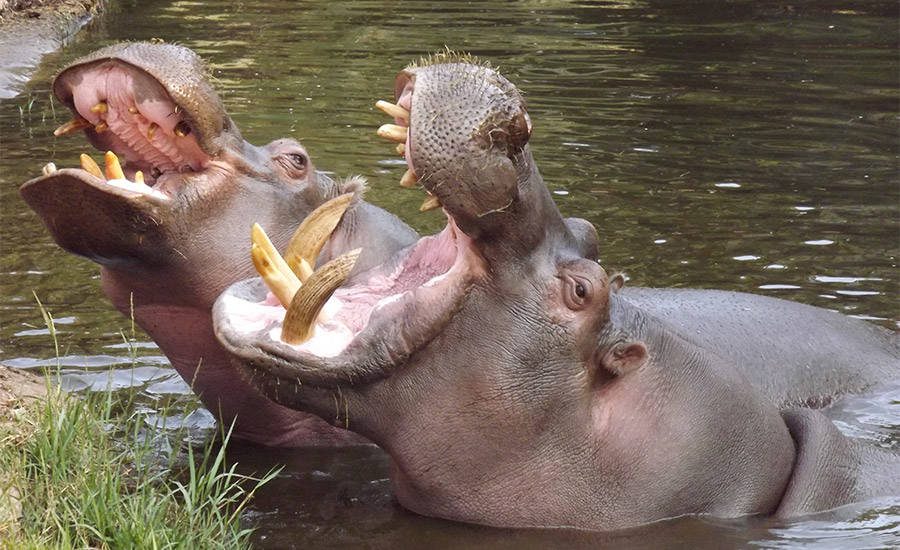Hippos and Colombia
Colombia. A country with amazing views of the tropical ocean deserves its stature as a tourist’s dream. However, there might be one small problem few consider when traveling to this paradise: roaming hippopotamuses.
It all began in the 1980s. The infamous drug lord Pablo Escobar had a private zoo (among other things) in Colombia. He smuggled four hippos into the country to diversify his collection. However, after he died in a shootout, a problem arose: what would happen to these enormous creatures?
The Colombian government quickly took control of his zoo. Officials did not see the bulging beasts as a priority, so they neglected them entirely. However, they quickly abandoned their own pond and multiplied. Now, there are 40-60 enormous hippos roaming the diverse terrain of Colombia.
The Colombian government has been considering controlling the growing hippo population by transport, sterilization or culling. However, most citizens dislike the idea of direct control. Since the hippos have only been free for a few decades, they have not had any observable effects on the environment. It is too early to tell if they are beneficial or harmful to Columbia’s ecosystem.
Still, there is one serious issue regarding these biological tanks: their highly territorial nature. Hippo pods have been known to tear apart intruding infant hippos if they dare to trespass. Their bite force of 1,800 pounds per square inch and their three-foot long tusks make short work of any unfortunate creature. Also, hippos weigh up to 7,000 pounds, and are capable of running up to 19 miles per hour.
If that wasn’t enough to terrify you, hippos are responsible for more than 500 deaths per year in Africa. They’ve been known to charge, trample and shred anybody stupid or brave enough to get in their way.
So far, no injuries involving Colombian citizens has occurred.
One hippo was killed in 2009 by the Colombian government. Its death was immediately met with public outcry, shredding the government’s plan to eliminate them. Therefore, the government turned to investigation, sterilization and/or transportation of the hippos.
Even if the government decides to try and cull these beasts, they’ll have one large task in front of them. The thick hide, dense layer of fat and sturdy skeleton of a hippo make it extremely difficult to kill them by gunshot, normally the easiest method for slaughter.
For now, the Colombian government watches from a distance and ponders how to deal with the unwanted hippo population properly.

